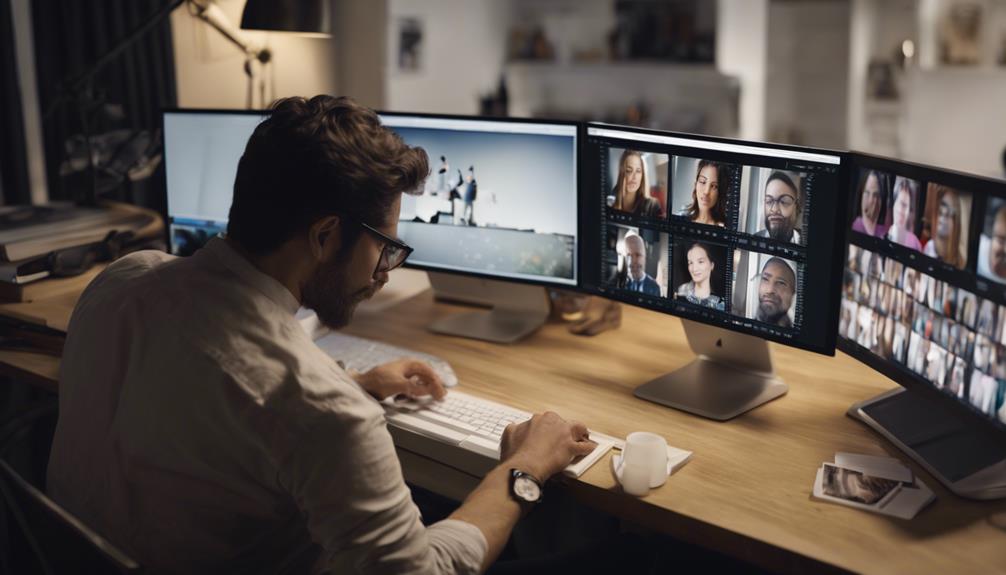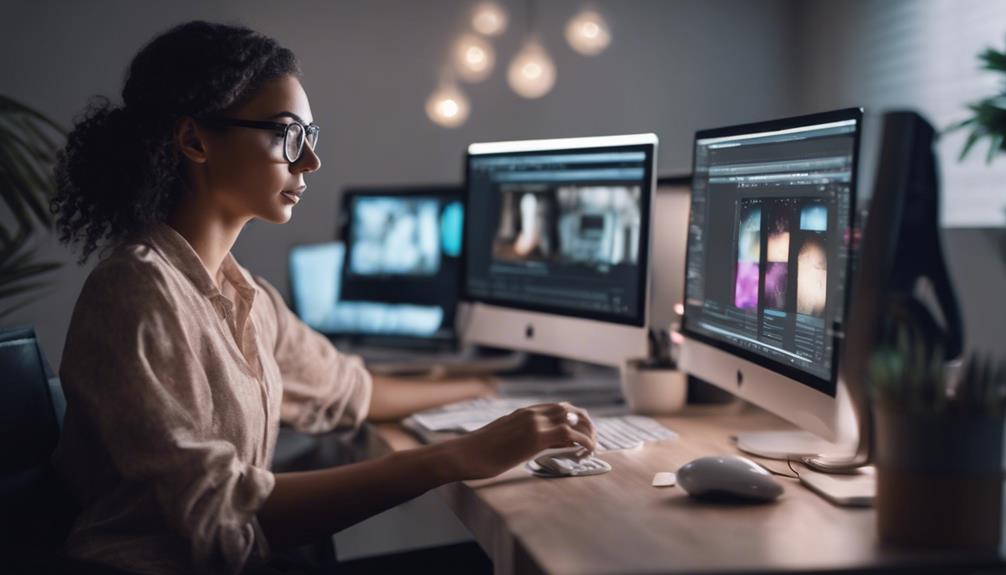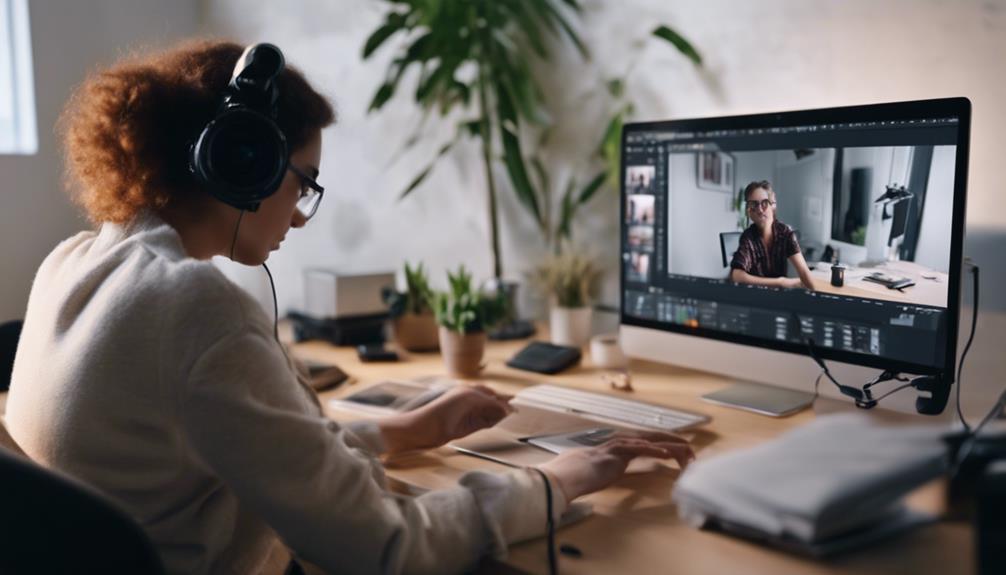You may not realize that you can improve your photography workflow with a virtual assistant by streamlining tasks you didn’t even know were slowing you down. By integrating a virtual assistant into your process, you can offload time-consuming administrative duties and focus more on your creative work. But how exactly can a virtual assistant help you enhance your photography workflow? Let’s explore some practical strategies that can optimize your efficiency and productivity in the world of photography.
Identify Workflow Bottlenecks
To optimize your photography workflow, the initial step involves identifying any bottlenecks that may be causing inefficiencies in your current process. Begin by analyzing each stage of your workflow, from importing images to final editing. Look for areas where tasks are taking longer than necessary or where there are frequent delays. Common bottlenecks include slow file transfers, disorganized file storage, or time-consuming editing techniques.
Identifying these bottlenecks is crucial as it allows you to streamline your processes effectively. For instance, if you notice that importing photos from your camera is time-consuming due to a slow memory card reader, consider upgrading to a faster model. Similarly, if you find yourself spending too much time searching for specific images because of a cluttered file structure, reorganize your digital assets into a more intuitive system. By addressing these bottlenecks, you can optimize your workflow and enhance your overall efficiency as a photographer.
Discuss Improvement Strategies
Consider implementing automation tools to streamline repetitive tasks and boost productivity in your photography workflow. By utilizing software like Lightroom presets, scheduling tools for social media posts, or even email templates for client communication, you can save valuable time and improve your overall efficiency. These tools can help you focus more on the creative aspects of photography rather than getting bogged down in routine tasks.
Effective time management is crucial for a successful photography business. Utilize project management platforms to organize tasks, set deadlines, and track progress. By having a clear overview of your workflow, you can prioritize important assignments, allocate resources efficiently, and ensure timely delivery of projects.
Communication is key in any workflow. Implement tools like Slack or Trello to facilitate collaboration with your team or clients. Organize your files systematically using cloud storage services like Google Drive or Dropbox to ensure easy access and seamless sharing. By enhancing communication and organization, you can streamline your photography workflow and achieve greater productivity.
Implement New Workflow Tactics
Enhance your photography workflow by exploring innovative tactics that can revolutionize your efficiency and productivity. To optimize your workflow, consider restructuring your processes to streamline tasks and eliminate bottlenecks. Start by identifying time-consuming or repetitive tasks that could benefit from automation or delegation to a virtual assistant. By integrating a virtual assistant into your workflow, you can offload administrative duties such as scheduling, email management, and basic editing, allowing you to focus on the creative aspects of your photography.
Another tactic to enhance your workflow is to establish a clear system for organizing and storing your files. Utilize cloud storage solutions to ensure seamless access to your photos from anywhere, anytime. Implementing metadata tagging and keywording can further expedite the search and retrieval of specific images, saving you valuable time during post-production.
Furthermore, consider incorporating project management tools to track the status of your assignments, set deadlines, and collaborate with your virtual assistant effectively. By embracing these workflow optimization tactics and integrating a virtual assistant into your photography business, you can boost your productivity and achieve greater success in your endeavors.
Train Your Virtual Assistant
Prepare a comprehensive training program to equip your virtual assistant with the necessary skills and knowledge to effectively support your photography workflow. Start by assessing your virtual assistant’s current skills and knowledge related to photography tasks. Identify areas where improvement or additional training is needed. Develop training modules that cover essential photography concepts, editing techniques, software proficiency, workflow management, and communication protocols.
Utilize a combination of resources such as video tutorials, written guides, virtual workshops, and practical exercises to enhance your virtual assistant’s understanding and proficiency. Tailor the training program to address specific gaps in knowledge and skills while also providing opportunities for continuous learning and development.
Regularly evaluate your virtual assistant’s progress through quizzes, assessments, and practical assignments. Encourage open communication to address any challenges or questions that may arise during the training process. By investing time and effort in developing a structured training program, you can empower your virtual assistant to effectively contribute to your photography workflow and enhance overall productivity.
Monitor and Evaluate Progress
Track the virtual assistant’s performance metrics consistently to ensure their progress aligns with the established training objectives. By monitoring key indicators like the number of tasks completed per day, accuracy rates, and communication responsiveness, you can gain valuable insights into their efficiency and effectiveness. Analyzing this data allows you to identify any areas where the virtual assistant may need additional support or training, enabling you to make timely adjustments to optimize their performance.
Utilize project management tools or time tracking software to keep a detailed record of the virtual assistant’s daily activities and accomplishments. Regularly review this information to track performance trends over time and assess whether the assistant is meeting the set goals and expectations. By maintaining a structured approach to monitoring progress, you can proactively address any issues that may arise and ensure the assistant remains on track to deliver high-quality results consistently.
Frequently Asked Questions
How Can I Effectively Balance Artistic Creativity With Efficient Workflow?
To balance artistic creativity with efficient workflow, prioritize creative inspiration while implementing time management strategies. Cultivate your artistic vision by incorporating productivity techniques that streamline your process, ensuring a harmonious blend of artistry and productivity.
What Are Common Mistakes to Avoid When Delegating Tasks to a Virtual Assistant?
When delegating tasks to a virtual assistant, prioritize tasks clearly, establish effective communication channels, delegate responsibilities suitably, and manage time wisely. Avoid mistakes by setting expectations, providing clear instructions, and maintaining open communication for better workflow optimization.
How Do I Ensure Data Security and Confidentiality When Working With a Virtual Assistant?
To ensure data security and confidentiality with your virtual assistant, implement data encryption protocols for sensitive information. Utilize secure file sharing platforms with access controls. Regularly audit permissions and monitor activity to safeguard your data effectively.
What Are Some Strategies for Maintaining Clear Communication With a Virtual Assistant?
To maintain clear communication with a virtual assistant, ensure communication strategies are in place. Provide clear instructions, establish feedback mechanisms, and schedule regular check-ins. These practices enhance workflow efficiency and foster a productive working relationship.
How Can I Address Potential Cultural or Language Barriers With a Virtual Assistant?
When addressing potential cultural or language barriers with a virtual assistant, focus on effective language translation and cross-cultural communication. Pay attention to interpreting gestures and non-verbal cues to ensure clear understanding and seamless collaboration.



